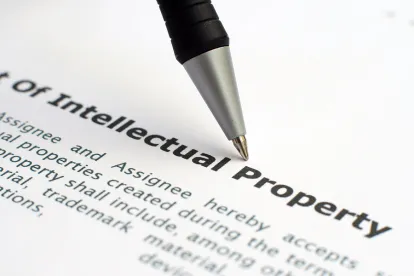This post follows our previous post summarizing Federal Circuit cases upholding software patent claims on Alice Step 1 grounds. Here, Step 2 decisions are explored in more detail, with a focus on additional lessons learned during the Step 2 analysis.
Surviving Step 2—which requires that the claims include “significantly more” than the abstract idea itself—often hinges on a factor that is found in, but is typically not the focus of, the Step 1 cases: whether the claim elements give rise to an inventive concept when considered as an ordered combination, including how the elements function in the particular arrangement claimed. Indeed, at least three of the four cases below depend on the “ordered combination” analysis, showing that this is a key hallmark of patent eligibility on Step 2 grounds.
DDR Holdings v. Hotels.com was the first Federal Circuit case to be decided in favor of patent eligibility after Alice. In DDR, the claims covered generating a composite web page that combined visual elements of a host website with third-party content. The specification explained that prior art systems allowed third-party merchants to lure the host website’s visitor traffic away, but the claimed solution “solved this problem … by creating a new web page that permit[ted] a website visitor to ‘be in two places at the same time.’” The court proceeded to find that “[w]hen the limitations of the … claims are taken together as an ordered combination, the claims recite an invention that is not merely the routine or conventional use of the Internet.” The claims stood apart from the prior art because “they d[id] not merely recite the performance of some business practice … along with the requirement to perform it on the Internet.” Instead, the claims specified how interactions with the Internet are manipulated to yield a desired result.
In Bascom v. AT&T, the claims covered filtering internet content using a remote, customizable filter. The decision characterized the inventive concept as “the installation of a filtering tool at a specific location, remote from the end-users, with customizable filtering features specific to each end user.” Under Step 1, the Federal Circuit declined to find the claims unambiguously directed to a non-abstract idea. However, the Court found the claims eligible under Step 2, stating that they recited a non-conventional and non-generic ordered combination of known, conventional pieces. In the final analysis, the claimed invention took a prior art filter solution and made it “more dynamic and efficient,” which was sufficient to clear the Step 2 hurdle.
In Amdocs v. Openet, the claims covered collecting network statistics and merging data in the context of an IP server provider billing system. The patent specification highlighted that its distributed architecture was a critical advancement over prior art systems that stored and processed data in one place, which allowed the system to act more efficiently and accurately while minimizing the impact on system and network resources. The court relied on the teachings of the specification, characterizing the claims as “purposefully arrang[ing] the components in a distributed architecture to achieve a technological solution to a technological problem specific to computer networks.” The court held that the claim does not “merely combine the components in a generic manner, but instead purposefully arranges the components in a distributed architecture to achieve a technological solution to a technological problem specific to computer networks,” which, when considered individually and as an ordered combination, recite an inventive concept.
In Trading Technologies v. CQG (also discussed in our previous Step 1 post), the claims covered an electronic trading system with a graphical user interface (GUI) having a “static price index,” which enabled traders to place trades more efficiently and accurately. The court held that the claims recite patent-eligible subject matter under both Step 1 and Step 2. With respect to Step 2, the Court highlighted precedent’s recognition that “specific technologic modifications to solve a problem or improve the functioning of a known system generally produce patent-eligible subject matter.” Although this case’s analysis was notably less detailed than the preceding cases, the court held that the “static price index” is an inventive concept that departs from routine or conventional use of computers and enables improved functioning of computers when compared to prior art systems.
While clear eligibility guidelines remain elusive at Step 2 just as with Step 1, the cases demonstrate that patent claims have the best shot under Step 2 if the key claim limitations are arranged in novel ways with respect to each other, e.g., to create an inventive concept when considered as an ordered combination. As with Step 1, successful claims will also be tightly tailored around the inventive contribution and can be clearly differentiated from the conventional art. There is also significant value at Step 2 to framing of the invention as a solution to a discrete technical problem, especially in greater detail in the specification.





 />i
/>i

